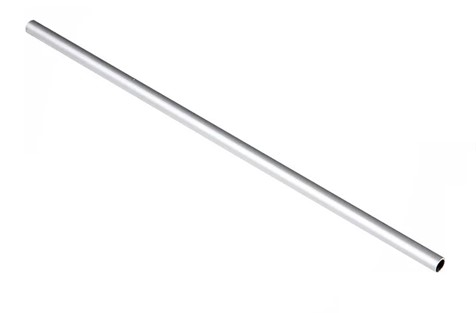Veterinary science is moving from bivalent to trivalent vaccines for pig farming

Today, vaccination is an integral part of the swine business, and although vaccine research and production is very complex and expensive, progress continues towards the development of multicomponent products. As Ed White reports in an article published on the Farmtario portal, a trivalent vaccine from Merck Animal HEALTH is currently being commercialized in the United States to control porcine circovirus (PCV2), Mycoplasma hyopneumonia and Lawsonia intracellularis. This will be the first trivalent vaccine of its kind on the market, and multiple studies were required to prove the effectiveness and working of the new combination.
Dr. Brett O'Brien, a company representative, in an interview with a Farmtario journalist, explained the relevance of the development: the combination vaccine can reduce the number of injections in young pigs, reduce stress and reduce labor costs. “Porcine circovirus has plagued the North American swine industry for nearly two decades, crippling many farms even before the first vaccine became available. Lawsonia causes ileitis ( a disease with enteritis symptom complex) and is another common problem among young pigs. Mycoplasma is a well-known scourge in pig production and worries producers all over the world. Vaccines for these diseases improve healthpigs, but the need to give young pigs multiple injections can be a strain on both the pig’s immune system and the staff.”
Dr. Scott Stellhic added that the circovirus has not stood still since its arrival in North America: “It has evolved to produce many dangerous strains. For much of the 2000s, PCV2a was a major concern, but by the end of the decade, PCV2b had supplanted it in clinical settings. In 2012, PCV2d was first discovered in the United States and soon became the dominant strain causing problems. In our case, the vaccine was developed to be resistant to all strains.”
Making trivalent vaccines is a huge undertaking , O'Brien said , given that current vaccines are designed to produce an immune response in one smaller dose and be less disruptive to pigs. To put this into perspective, compared to earlier versions, which were administered using a four-millimeter injection, the new drug requires a two-millimeter dose. The drug will first be available in the United States, then distributed in other countries.
Read together with it:
- Парагвай: Экспорт субпродуктов является растущей отраслью и уже достиг 95,4 млн долларов СШАЭкспорт говяжьих субпродуктов в этом году значительно вырос. К концу августа выручка составила 95,4 млн долларов США по сравнению с 54,6 млн долларов США на тот же конец прошлого года. По данным SENACSA, в конце августа этого года было экспортировано 51 миллион килограммов мяса по сравнению с 33,7 миллиона килограммов на конец того же месяца прошлого года. Экспорт субпродуктов увеличился на 51,3%....
- Новые горизонты сотрудничества: Россия и Аргентина обсуждают совместный доступ на рынки продукции животного происхожденияОдной из ключевых тем конференции стал контроль за производством ветеринарных препаратов в Аргентине. Аргентинская сторона представила свою систему контроля, включающую Управление ветеринарных продуктов и Управление лабораторий животных. Эти организации обеспечивают высокие стандарты безопасности, так как каждая производственная единица подвергается проверкам каждые 3-5 лет и зарегистрирована в ин...
- Министерство сельского хозяйства США представило план по снижению цен на говядинуПоголовье скота в стране находится на самом низком уровне за последние 75 лет, в то время как спрос на говядину вырос на 9% за последнее десятилетие. Поскольку увеличение поголовья скота в стране требует времени, Министерство сельского хозяйства США (USDA) уже сейчас инвестирует средства, чтобы сделать эти рынки менее волатильными для скотоводов в долгосрочной перспективе и более доступными для по...
- В Кремле пообещали ответ на санкции сообразно интересам РоссииДмитрий Песков В Кремле начали анализировать введенные санкции для разработки ответных мер, заявил пресс-секретарь президента России Дмитрий Песков, передает корреспондент РБК. «В настоящий момент анализируются те санкции, которые определены. Будем делать то, что наилучшим образом соответствует нашим интересам», — сообщил Песков, отвечая на вопрос об ответных мерах России. 19-й пакет санкции Еврос...
- США ввели санкции против президента КолумбииПрезидент Колумбии, его жена и старший сын, а также глава колумбийского МВД попали под санкции США из-за трафика наркотиков из Колумбии в Штаты. Бессент обвинил Петро в отказе пресечь деятельность наркокартелей Густаво Петро Минфин США ввел санкции против президента Колумбии Густаво Петро, сообщается на сайте ведомства. «Президент Петро позволил наркокартелям процветать и отказался пресечь их деят...
- Чего ожидать от «одной из самых рискованных» поездок ТрампаДональд Трамп начал турне по Азии, в ходе которого встретится с лидерами ключевых стран, включая Си Цзиньпина. Почему эта поездка может оказаться сложнее, чем недавние визиты в Европу и на Ближний Восток — в статье РБК Дональд Трамп Какие встречи запланированы в ходе турне Президент США Дональд Трамп вылетел из Вашингтона поздним вечером в пятницу, 24 октября, и утром в субботу его борт приземлитс...
- Callas spoke about the EU's joy over new US sanctions against Russia.The European Union welcomes the US "signals" regarding RUSSIA, Kallas said. She called Washington's new sanctions against Rosneft and LUKOIL a "signal of strength" and agreement between Europe and the US. Moscow considers the sanctions illegal.The European Union approves the US imposition of new sanctions against Russia, European Union Foreign Minister Kaja Kallas told reporters. Kallas published ...





























































